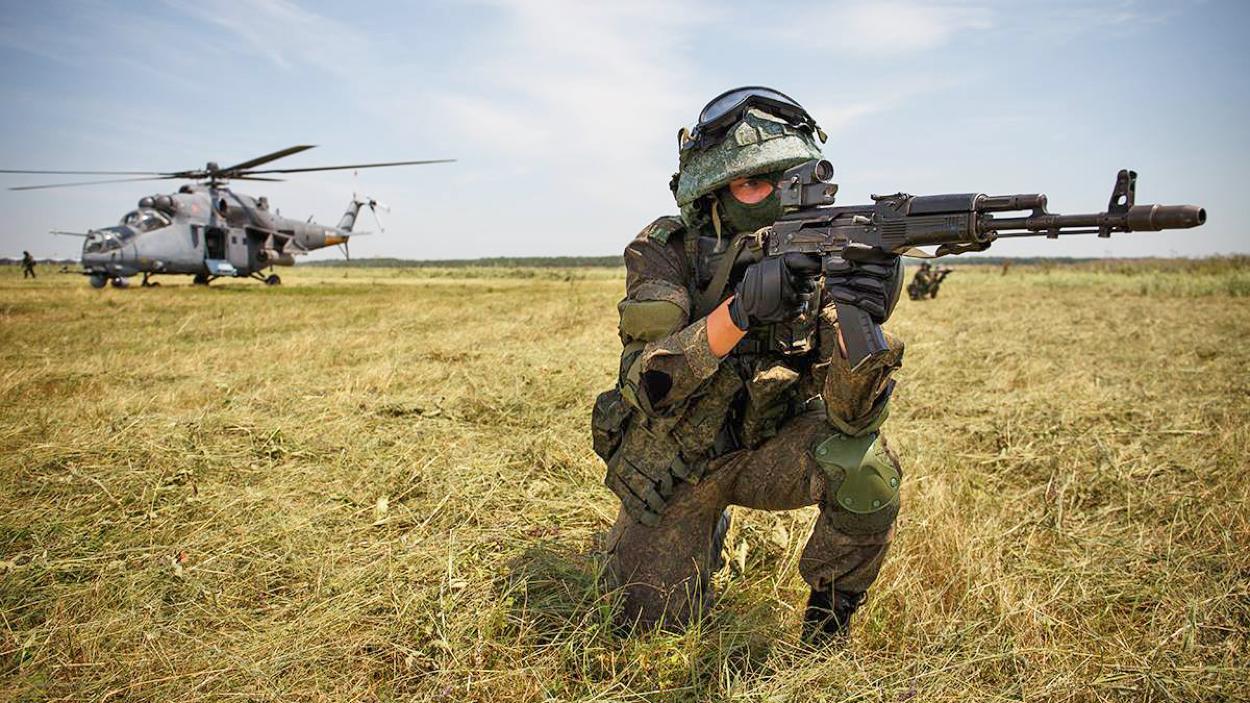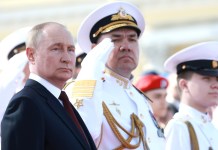The Russian military has annihilated more than 13,000 Ukrainian tanks and other combat vehicles since the invasion/special military operations, the Russian Defense Ministry claimed.
“A total of 517 aircraft, 253 helicopters, 8,392 unmanned aerial vehicles, 441 anti-aircraft missile systems, 13,006 tanks, and other armored combat vehicles, 1,170 multiple rocket launchers, 6,902 field artillery and mortar guns, as well as 14,760 units of special military vehicles have been destroyed since the beginning of the special military operation,” the statement said, according to Tass News Agency.
Earlier, an exercise by Russian military units in the Kaliningrad exclave saw all types of fixed and rotary-wing aircraft participating in what appeared to be a drill to defend the region from an external attack.
Located on the Baltic Sea with Lithuania to the north and Poland to the south, Kaliningrad has long been perceived by the North Atlantic Treaty Organization (NATO) as a means of Russian power projection in the Baltic region.
Russia has held several live-fire exercises in Kaliningrad since the beginning of the year, with even the Baltic Sea Fleet sinking target ships as a part of its aggressive posture to deter NATO.
The exercise also comes close on the heels of a series of interceptions between NATO aircraft and Russian jets, where the latter are scrambled to confront them in the air, forcing their retreat.
Therefore, the non-kinetic military deterrent actions have seen Russia responding more aggressively on the ground and the sea in the Baltics through Kaliningrad.
All Guns Firing
According to TASS, the Western Military District of the Baltic Fleet held the drill where “all types of naval aviation aircraft completed flights over the mainland Kaliningrad region.”
Su-30SM, Su-30SM2, and Su-24 aircraft undertook “tactical episodes to practice tasks for their intended purpose — fire support for ground units, destruction of command posts, armored vehicles, manpower and surface ships of the mock enemy, as well as conducting aerial reconnaissance.”
Interestingly, even the Black Sea Fleet recently used the Su-30 fighter to strafe and fire its guns on Ukrainian speedboats trying to attack Snake Island.
But the most “difficult” part of the exercise was undertaken by Su-27 fighter pilots, who practiced “piloting techniques using offensive and defensive maneuvers at various altitudes and speeds and the conditional use of fighter weapons.”
The Su-27 has been the fighter of choice for Russia while intercepting NATO planes, the last on October 19, involving RC-135 Rivet electronic warfare aircraft and two Eurofighter Typhoons over the Black Sea.
“When performing tasks to conduct modern maneuverable air combat, aircraft crews during tactical confrontation alternately conducted training to search for, detect and destroy mock enemy aircraft,” TASS quoted a statement from the Russian Ministry of Defense (RuMoD).
Parallelly, at the Donskoye airfield in the Kaliningrad region, Mi-24 attack helicopters, Mi-8 transport helicopters, and Ka-27 ship helicopters also “conducted scheduled training flights.”
Defending Kaliningrad Or Attacking NATO?
While practicing take-off and landing, the choppers also undertook “aerial reconnaissance flights.” They then “covered ground units, carried out training approaches to attack ground targets of a mock enemy.”
Ka-27 helicopter crews practiced classic anti-submarine warfare (ASW), flying into a “given square of the sea to reveal the surface situation, and searched for submarines of a mock enemy in the daytime and at night.”
However, whether the Close Air Support (CAS) drill flown by the Mi-24 and Mi-8 pilots envisages a Russian attack on a NATO-controlled land or island feature in the Baltics or a Western strike on Kaliningrad, both scenarios will require either side to undertake amphibious landing operations.

Previous Drills In Kaliningrad
A drill in early April included close air support (CAS), ground attack, aerial bombing, and maneuvers by infantry fighting vehicles (IFV) and ships of the Baltic Sea Fleet.
These maneuvers saw Su-30SM and Su-30SM2 multi-purpose all-weather fighters, Su-24 attack aircraft, and An-26 military transport aircraft play out tactical episodes of missions for their intended purpose.
These included fire support for ground units, destruction of command posts, armored vehicles, and manpower of a mock enemy, as well as conducting aerial surveillance.
Before that, in late March, another drill saw the S-400 Triumph SAM system being included.
“The S-400 Triumf teams’ systems practiced response strategies upon receiving an alert regarding a notional airspace violation by an enemy aircraft,” the RuMoD had said.
“Su-27 fighters from a naval aviation unit acted as the intruders while the air defense (AD) crews detected, identified, tracked, and engaged them in simulated combat. The exercises concluded with the Triumf teams electronically engaging the targets,” it said.
- The author can be reached at satamp@gmail.com
- Follow EurAsian Times on Google News




